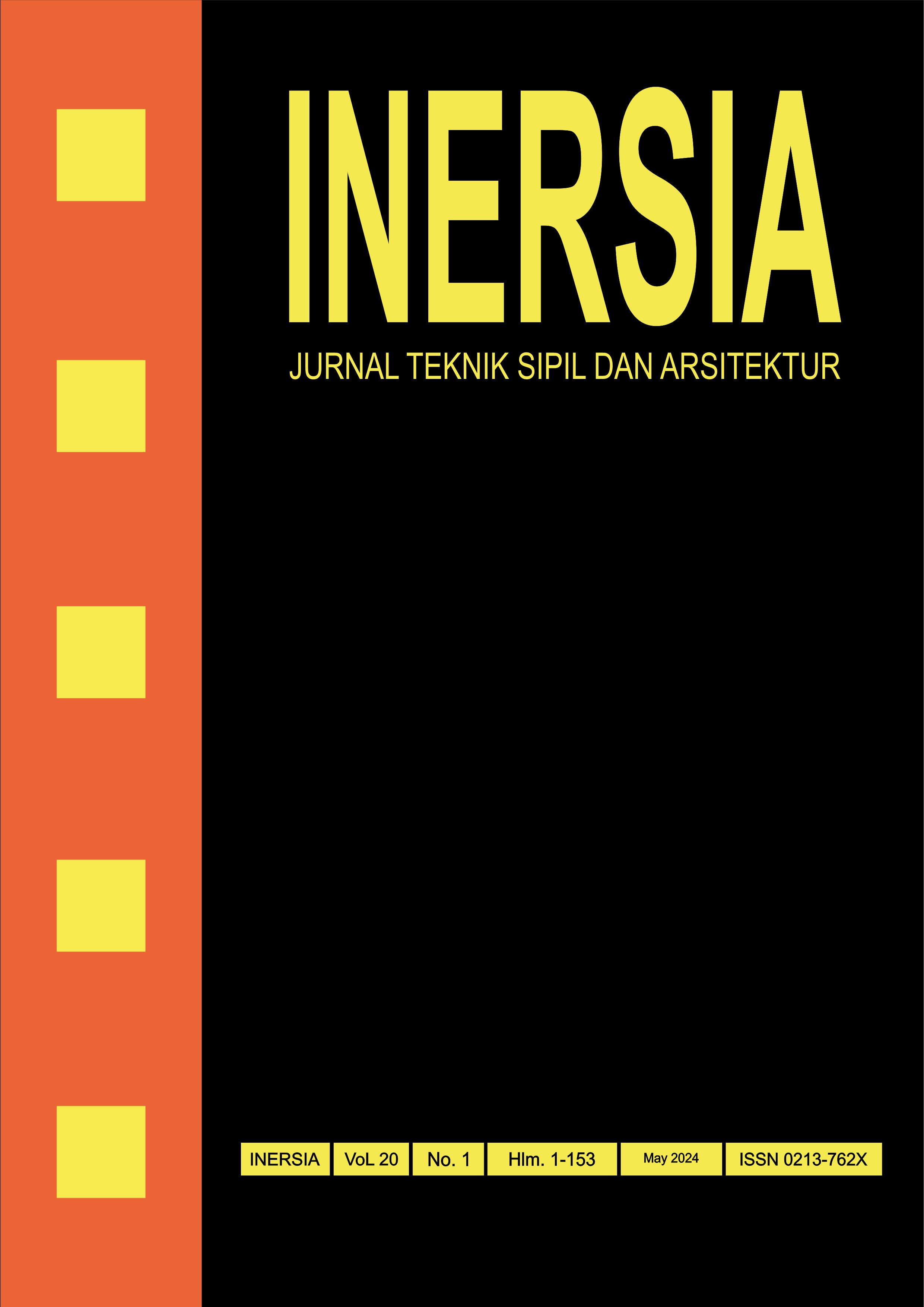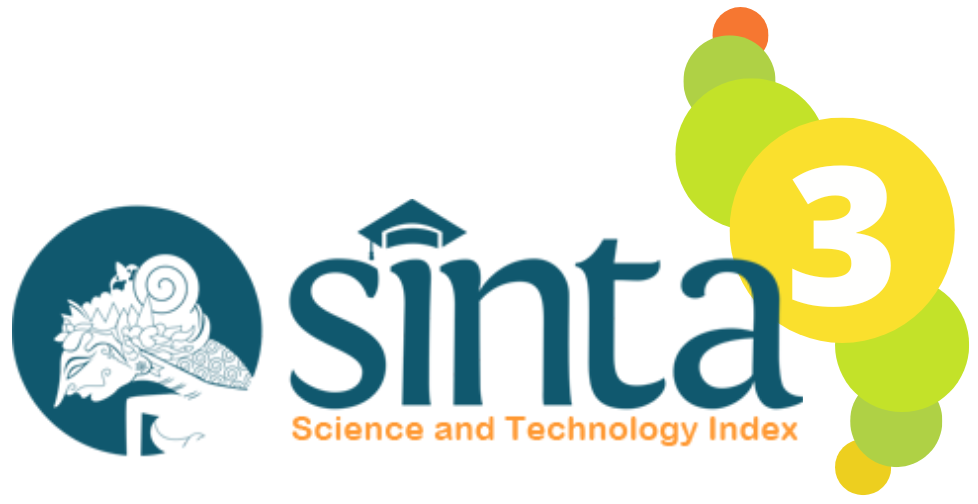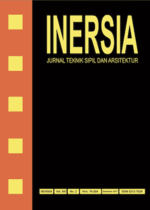Landslide Mitigation at The Bagong Dam Abutment, Trenggalek District
DOI:
https://doi.org/10.21831/inersia.v20i1.66371Abstract
Landslides occurred continuously from July 2022 until July 2023, disrupting the construction of the Bagong Dam abutment. Geologically, the foundation of the Bagong Dam consists of a fairly thick colluvial layer, which is prone to landslides. So, the analysis of landslide mitigation at the Bagong Dam abutment is needed. The slope stability analysis carried out by Fellenius and Bishop method, then the slope modeling was carried out using Geostudio software. The analysis results on the existing slopes produced a safety factor of 0.987 (<1.07) for the Fellenius method and 1.042 (<1.07) for the Bishop method. These safety factors indicate that the existing slope is unstable and slope failure is likely to occur. In the first alternative countermeasure analysis, the slope safety factors for the cross-section of the dam at STA 0+625 were 1.715 for upstream and 1.338 for downstream; at STA 0+641, 1.321 upstream and 1.306 downstream; and for the longitudinal section of the dam, 1.525. All these safety factors greater than 1.25, indicating that the slope is stable. In the second alternative countermeasure, the slope safety factors obtained for the cross-section of STA 0+641 were 1.362 for upstream and 1.386 for downstream, and 1.657 for the longitudinal section. These safety factors are also greater than 1.25, which indicates the slope is in stable condition. The additional cost for implementing the first alternative countermeasure is 73.9 million, while for the second alternative is 35.7 million. So that, the second alternative countermeasure is the best choice by the multi-criteria decision-making analysis results.
References
Z. Ke, W. Hong, L. Jianxing, Z. Yuguang, C. Fangping, and Y. Zhengjun, "Deformation and failure mechanism of colluvial landslide under sustained rainfall-a case study of Xinzhan landslide in Tongzi County, China," Alexandria Engineering Journal, vol. 71, 2023, doi: 10.1016/j.aej.2023.03.044.
Kementerian PUPR, Petunjuk Penyelidikan dan Penanggulangan Gerakan Tanah (Longsoran). Jakarta: Badan Penelitian dan Pengembangan Pekerjaan Umum, 1986.
H. C. Hardiyatmo, "Tanah Longsor dan Erosi: Kejadian dan Penanganan," Gadjah Mada University Press, 2012.
A. S. Muntohar, "Tanah Longsor: Analisis-Prediksi-Mitigasi," Universitas Muhammadiyah Yogyakarta, 2020.
R. Rahayu and S. Permana, "Analisis Kestabilan Lereng Bendungan Akibat Fluktuasi Muka Air," Jurnal Konstruksi, vol. 19, no. 2, 2022, doi: 10.33364/konstruksi/v.19-2.916.
A. Panjaitan, O. B. A. Sompie, and ..., "Analisis Perhitungan Stabilitas Lereng Metode Fellenius Menggunakan Program Php," Jurnal Sipil Statik, vol. 8, no. 3, 2020.
T. A. Bogaard and R. Greco, "Landslide hydrology: from hydrology to pore pressure," Wiley Interdisciplinary Reviews: Water, vol. 3, no. 3, pp. 439–459, May 2016, doi: 10.1002/WAT2.1126.
J. S. Frans and M. H. Nurfalaq, "STUDI GEOTEKNIK PENGARUH MUKA AIR TANAH TERHADAP KESTABILAN LERENG TAMBANG BATUBARA," Prosiding Temu Profesi Tahunan PERHAPI, vol. 1, no. 1, 2020, doi: 10.36986/ptptp.v1i1.90.
B. Zhao, H. Liao, and L. Su, "Landslides triggered by the 2018 Lombok earthquake sequence, Indonesia," Catena (Amst), vol. 207, 2021, doi: 10.1016/j.catena.2021.105676.
Z. Zhang et al., "Effects of changes in soil properties caused by progressive infiltration of rainwater on rainfall-induced landslides," Catena (Amst), vol. 233, p. 107475, Dec. 2023, doi: 10.1016/J.CATENA.2023.107475.
N. A. Anisa, I. Sriyana, and S. Darsono, "Analisis Penanganan Longsoran Pada Bangunan Pelimpah Bendungan Ciawi," Bentang : Jurnal Teoritis dan Terapan Bidang Rekayasa Sipil, vol. 11, no. 1, pp. 1–10, Jan. 2023, doi: 10.33558/bentang.v11i1.5609.
Balai Air Tanah dan Air Baku, Laporan Hasil Investigasi Air Tanah di Area Pembangunan Bendungan Bagong. Jakarta: Balai Air Tanah, 2023.
BBWS Brantas, Laporan Sertifikasi Bendungan Bagong. Surabaya: BBWS Brantas, 2018.
O. L. Wijana, A. T. Mandagi, and A. N. Sarajar, "Analisis Kestabilan Lereng Dengan Metode Bishop Modified Dan Simplified Menggunakan PLAXIS (Studi Kasus: Rusunawa Tingkulu)," Tekno, vol. 22, no. 87, 2024.
Downloads
Published
How to Cite
Issue
Section
License
Authors who publish with INERSIA journal agree to the following terms:
- Authors retain copyright and grant the INERSIA journal right of first publication with the work simultaneously licensed under Creative Commons Attribution License (CC BY 4.0) that allows others to share the work with an acknowledgment of the work's authorship and initial publication in this journal.
- Authors can enter into separate, additional contractual arrangements for the non-exclusive distribution of the published version of the work (e.g., post it to an institutional repository or edit it in a book), with an acknowledgment of its initial publication in this journal.
- Authors are permitted and encouraged to post their work online (e.g., in institutional repositories or on their website) before and during the submission process, as it can lead to productive exchanges, as well as earlier and greater citation of published work.

INERSIA by https://journal.uny.ac.id/index.php/inersia was distributed under a Creative Commons Attribution 4.0 International License











